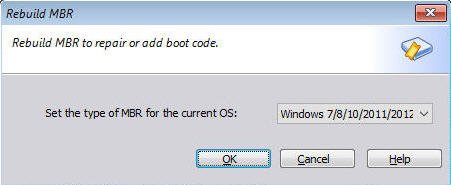Lately my computer gave another issue as I was trying to reinstall Windows 10 on a freshly formatted partition of my 2TB drive, which went through fine, until it restarted and my PC said NTLDR is missing, press Ctrl+Alt+Del to restart.

This issue applies to the Windows XP operating system, including Windows XP Professional and Windows XP Home Edition.

Ntldr Missing Error
There are a number of possible causes for NTLDR errors, including the most common 'NTLDR is missing' issue.

The most common reason for this error is when your computer is trying to boot from a hard drive or flash drive that is not properly configured to be booted from. In other words, it's trying to boot from a non-bootable source. This also would apply to media on an optical drive or floppy drive that you're trying to boot from.
Other possible causes include corrupt and misconfigured files, hard drive and operating system upgrade issues, corrupt hard drive sectors, an outdated BIOS, and damaged or loose IDE cables.
There are few different ways that the 'NTLDR is missing' error may present itself, with the first item below being the most common:
The 'NTLDR is missing' error displays very shortly after the computer is first started, immediately after the Power On Self Test (POST) is complete. Windows XP has only initially begun to load when the NTLDR error message appears.
Windows 10, Windows 8, Windows 7, and Windows Vista utilize BOOTMGR, not NTLDR. If you receive an 'NTLDR is Missing' error in one of these operating systems, especially early in the installation process, try starting the clean install process over again from scratch.
How to Fix 'NTLDR is Missing' Errors
Restart your computer. The NTLDR error could be a fluke.
Check your floppy and optical (CD/DVD/BD) drives for media and disconnect any external drives. Often times, the 'NTLDR is missing' error will appear if your computer is trying to boot to a non-bootable floppy disk, CD/DVD/BD, external hard drive, or flash drive.
If you find that this is the cause of your problem and it's happening a lot, you might want to consider changing the boot order in BIOS so the hard drive with Windows installed is listed first.
Check the hard drive and other drive settings in BIOS and ensure they are correct. The BIOS configuration tells the computer how to use a drive, so incorrect settings can cause problems, including NTLDR errors.
There is usually an Autosetting for the hard drive and optical drive configurations in BIOS which is usually a safe bet if you're not sure what to do.
Restore the NTLDR and ntdetect.com files from the Windows XP CD. Restoring these two important system files from the original Windows XP CD may do the trick.
Repair or replace the boot.ini file. This will prevent the NTLDR error if the cause of the problem is a boot.ini file that is not configured properly for your Windows XP installation.
Write a new partition boot sector to the Windows XP system partition. If the partition boot sector has become corrupt or isn't properly configured, you may receive the 'NTLDR is Missing' error.
Repair the Windows XP master boot record. NTLDR error messages may also appear if the master boot record is corrupt.
Reseat all internal data and power cables. NTLDR error messages could be caused by loose or malfunctioning IDE cables.
Try replacing the IDE cable if you suspect it might be faulty.
Update your motherboard's BIOS. Occasionally, an outdated BIOS version can cause the 'NTLDR is Missing' error.
Perform a repair installation of Windows XP. This type of installation should replace any missing or corrupt files. Continue troubleshooting if this does not resolve the issue.
Perform a clean installation of Windows XP. This type of installation will completely remove Windows XP from your computer and install it again from scratch.
While this will almost certainly resolve any NTLDR errors, it is a time-consuming process due to the fact that all of your data must be backed up and then later restored. If you can't gain access to your files to back them up, understand that you will lose them all if you continue with a clean installation of Windows XP.
Replace the hard drive and then perform a new installation of Windows XP.
If all else has failed, including the clean installation from the last step, you're most likely facing a hardware issue with your hard drive.
Need More Help?
Windows Xp Ntldr Missing
If you're not interested in fixing this NTLDR issue yourself, see How Do I Get My Computer Fixed? for a full list of your support options, plus help with everything along the way like figuring out repair costs, getting your files off, choosing a repair service, and a whole lot more.